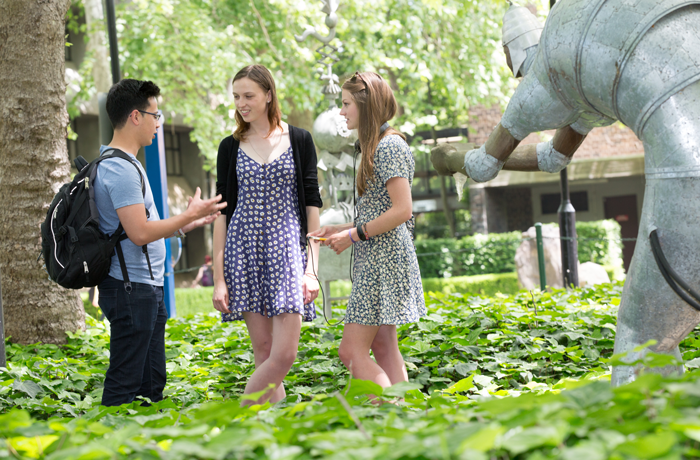The web project scope includes providing web resources for staff and students, and organising their pathways into other university web applications.
The web transformation project has used different terminology, including ‘intranet’ and ‘staff and student websites’ to describe what is planned. This is ambiguous, so let’s clarify exactly what is planned.
A key principle of the project is to maintain a user focus. Students are the University’s largest audience, and staff are frequent users of Macquarie’s websites.
A fundamental tradeoff of web communication is that the more people a website caters for, the less effective it is. So having a website dedicated to students and another dedicated to staff allows their needs to be met without compromise. This also allows the public-facing website to focus specifically on external audiences.
Macquarie University currently has both student and staff websites. There are also some staff-only intranets, plus information for staff and students located in other places.
Security
Historically it has been common to define the scope of websites based on technology and security, with an intranet for secure content and other sites for open public information. This is no longer a technical requirement, as we can place information on a single website and choose appropriate security settings for each section or article. Obviously, care must be taken to set security correctly.
This approach allows Macquarie University to bring together information for students in one place, which will be more convenient for them. The same goes for staff information.
Logins
Traditional intranets require people to login as the first step. This gives the impression that all the information within the intranet is sensitive. This technical approach blocks external people (without a login) from seeing the content. Logging in is an unnecessary step if a person is seeking a piece of public information.
We will design the staff and student websites to request a person to log in the first time they try to access a secure piece of information or area of the site. They will remain logged in until they choose to log out.
Access from different locations
Many traditional intranets can only be accessed from company premises, or through a secure VPN connection. This is not the intention at Macquarie University. We intend for people to have a similar experience, no matter what section of the website they are visiting.
Personalisation
We also intend to use personalisation to customise the website for the needs of different groups of users.
For example, an HDR student has significantly different needs to a coursework student. We intend to identify the type of person when they log in and tailor their experience to be more relevant.
The term ‘personalisation’ encompasses a range of approaches. The one we plan to adopt is to research the needs of different cohorts of students and staff. Personalisation will provide an experience optimised for that particular cohort. One example might be first year law students.
We won’t provide everyone with a blank canvas to configure their own experience. The initial experience wouldn’t be optimal, and industry research shows that less than 10 per cent of people will use the capability.
We also won’t use an approach that learns a persons behaviour and adapts accordingly. This would cause the website to lag behind a person’s needs: at any rate, much of the information is already known by the University and there is no need to collect it again.
Next steps
- Research with staff and students will begin in April 2015.
- Personas will be developed to show the different groups of needs for the websites.
- A content review will identify the information relevant to the different cohorts within these groups.
- New staff and student websites will be created and content migrated to them from a wide range of sources.
- Templates in the new Macquarie University brand will be applied to the content.
- Security and personalisation configuration will be applied to the web pages.
- Staff will be trained in the new technology and processes.
- The new sites will be launched in early 2016, replacing the existing websites.

